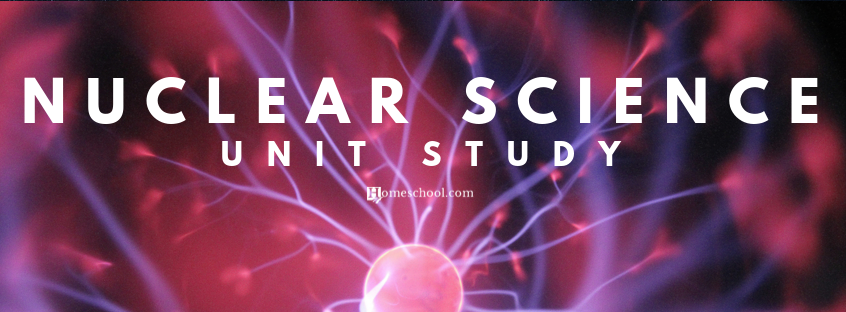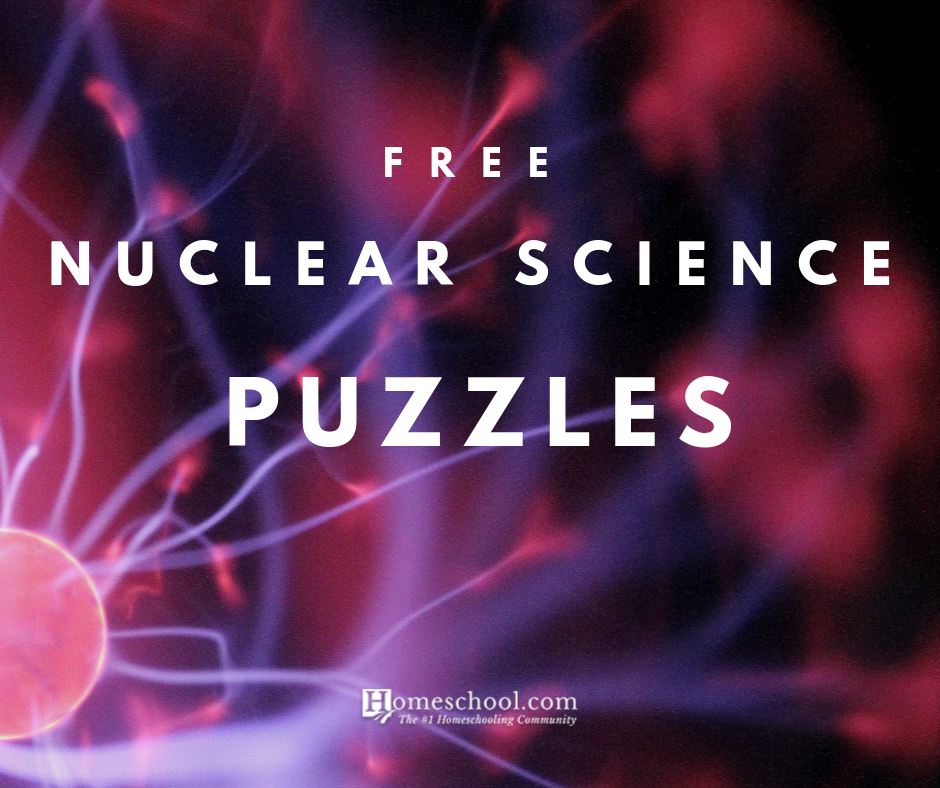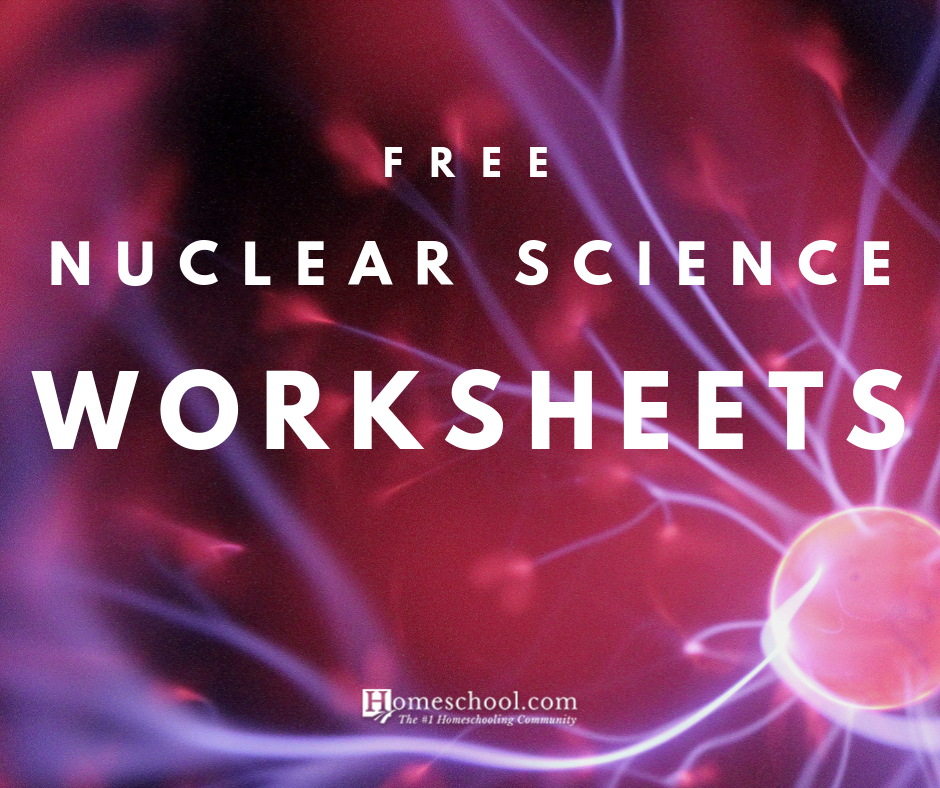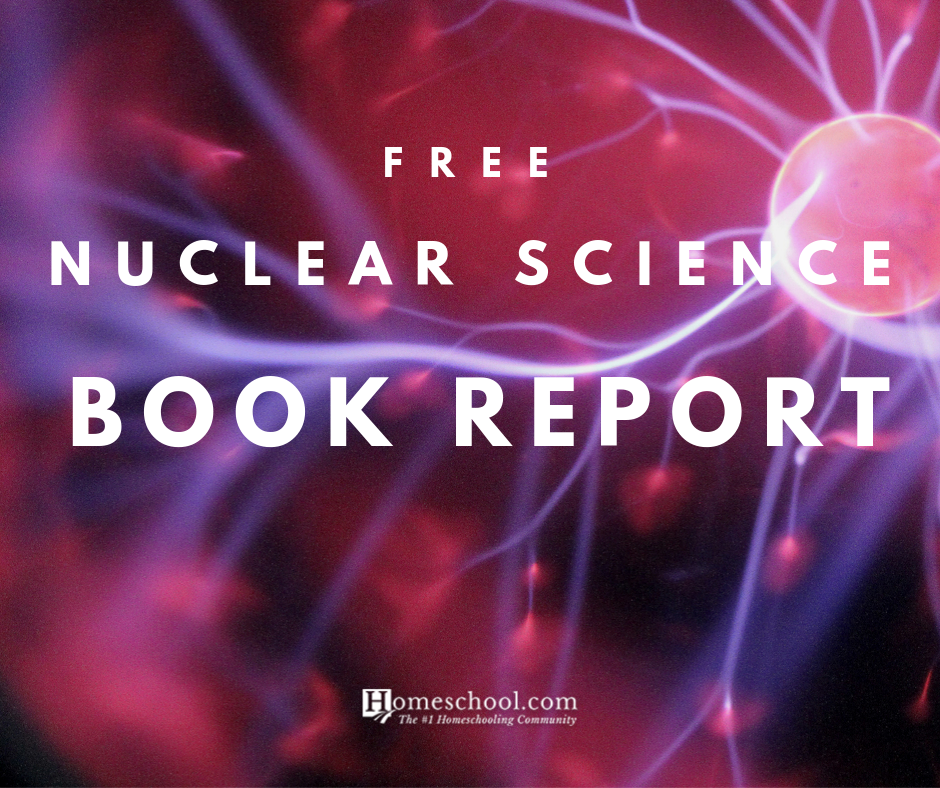What do we know about nuclear science? What do we still have yet to learn? There are nearly infinite uses of nuclear technology in our society today. It is immersed in our medical system, scientific endeavors, research goals, modern conveniences for transportation, security, heating, cooling, and more — even solar energy is nuclear fusion! And yet, as students and average people (aka those who aren’t nuclear scientists!), what do we really know about nuclear science?
That’s exactly why we have created this unit study! Welcome to Nuclear Science Week!
Nuclear Science Week is an annual international celebration and a chance to learn more about how nuclear energy impacts our world, as well as for asking questions and jumpstarting future solutions. It’s the opportunity to look at how far we have come, to analyze our current status, to estimate our future trajectory and to question how we can continue to improve. From October 14th – October 18th, scientists, students, and researchers from around the globe will gather to explore, learn, study, and present information about nuclear science! This celebration, though based on a global intent regarding how nuclear science affects our world, also explores the local and regional impacts.
What Exactly is Nuclear Science?
It’s easy to throw around terms like “nuclear energy” and “nuclear science,” but what do they actually mean? After all, we can’t discuss the benefits of nuclear science without a knowledge of what we are referring to. At its roots, the term “nuclear” in nuclear science refers to the nucleus of an atom. It is, essentially, the study of the atomic world. The incredible part of this study, however, is that even though it is based on the smallest level of matter, nuclear function reveals that it impacts our world in huge ways because it is the foundation of our planet and life as we know it. 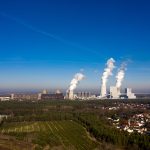
The effects of nuclear science extend well beyond microscopes and discoveries in the lab. Nuclear research reaches to the medical field with procedures, treatment, equipment, as well as agriculture, environmental research, and much more. An understanding of nuclear science is crucial to understanding our world. Consider this: if we can understand how atoms combine and interact at their level, we will be able to understand how to create improved materials, medicines, and procedures.
Radiology, imaging, radiation — all of it uses nuclear technology. The 21st-century procedures we have come to rely on such as X-rays, CT scans, and mammography wouldn’t exist without nuclear science research and its possible uses for human betterment. Due to radiation’s penetration of the atomic level, it does come with risks, but the benefits in these cases far outweigh the risks. The discovery of these procedures is incredible because they are safe, effective, and have eliminated the ancient need for cutting into the body for minor issues–which avoids numerous other risks as well. Thanks to nuclear science, we can use these radiation rays to evaluate our health and attain the necessary treatment.
The History of Nuclear Science Week
Nuclear Science Week began in 2009 when the Smithsonian consulted with its nuclear industry partners about the need for creating more communication and public awareness of the importance of nuclear science. As a result, the international week of celebration, study, and exploration was created! These industry leaders and institutes recognize the need for the public to know what was being done in the nuclear science fields, and why it mattered. Numerous people have devoted their lives to this study and research, and yet it still revolves within mystery and complicated jargon. However, the basis of this branch of science, and its impact on our world can definitely be understood by the general public. In fact, our world needs to understand the work that is being done to bring us sustainable options, better technology, and improved medicine. Consequently, Nuclear Science Week was born!
The first celebration was held on January 2010, in Albuquerque, NM. This continued through 2012, however, the date changed in 2013 when the committee agreed it was too cold for several parts of the country to participate as desired. At that point, the celebration of Nuclear Science Week was officially moved to the third week of October, annually. This new date allowed for all regions of power generation, national defense, nuclear medicine, and schools to participate fully during the week.
In addition to a few national events, many states, counties, and cities host events for Nuclear Science Week. All communities are invited to get involved, because nuclear science affects everyone. Nuclear Science Week has been hosted all over the country, from Chicago, Seattle, Aiken, Knoxville, and Idaho Falls. Albuquerque has enjoyed hosting the main event both the first year and in 2018, and Washington, D.C. will tread familiar grounds as its second time hosting in 2019.
Nuclear Science Week
Each year has a dedicated theme for the celebration, and 2019’s theme is: “Get to Know Nuclear.” Many people are unaware of what exactly nuclear science is and how it impacts our world — which is what this year aims to resolve!
A different city is selected every year to host Nuclear Science Week with all of its events and activities. This year, Washington, D.C. will host the week’s celebrations as presented by the National Museum of Nuclear Science & History, as well as the Palo Verde Generating Station. The two sponsors will be presenting interactive events and even an award ceremony!
This year, the world celebrates its 10th anniversary of Nuclear Science Week! There will be a special emphasis this year on asking questions and pursuing greater solutions. Researchers will be looking to push the boundaries for greater improvement and are passionate about showing the general public how essential nuclear science is, both in the study and our daily lives.
You can find several local events by browsing this listing on the Nuclear Science Week website. As for the events being hosted in D.C., participants can expect these three national events:
- Opening Reception at Charlie Palmer Steak. The event welcome with an award ceremony and food, drinks, and live music.
- October 15th | 5-8pm
- Capitol Hill Day at Rayburn House Office Building. An interactive space for learning and discussing the benefits of nuclear science.
- October 16th | 12-5:30pm
- U.S. Department of Energy Millennial Nuclear Caucus. A free event, open to the public, to eliminate the discrepancy between science and policies.
- October 17th | 4:30-7:30pm
The Importance of Learning About Nuclear Science and Nuclear Function
We’ve covered the impact of nuclear science on modern treatment and technology, such as in the medical field, but there are several other day-to-day benefits of nuclear research. For those of us who are unaware of its impact, it can be easy to disregard the importance of these studies. When it comes to the atomic level and physics, these branches of science can seem too complicated or out-of-touch to affect people who have completely unrelated lives. Consequently, when you hear about nuclear science, it may be tempting to brush it off since it doesn’t affect your immediate life as you know it. However, if you agree with the points I just mentioned, you belong to the exact demographic that Nuclear Science Week is trying to reach!
Nuclear scientists and related professionals want to share with the individuals who don’t revolve their lives around science. The circle of everyday folks like you and I, who study it for our kids’ schoolwork and fun projects, are exactly the individuals that the nuclear energy professionals want to teach regarding the practical applications of their research.
Here are ten important benefits of nuclear science!
- Radioisotopes were discovered because of nuclear technology. In 2014-2016, 1 in 9 people were suffering from undernourishment, and the use of radioisotopes in agriculture and food greatly reduced these numbers.
- Fertilizer can be evaluated for how much is used for plants and how much is lost to the environment. If not maintained properly, fertilizer can negatively impact our environment, but nuclear research has helped tag and analyze how it is being used down to its atomic level.
- Nuclear energy will help meet increasing energy needs. Estimates predict nearly a double of energy usage by 2050, which will put great demands on our planet. Researchers believe nuclear energy will help meet these growing demands.
- 40-50% of nuclear medicine procedures are for cardiology. We know about X-rays and radiology for cancer treatment, but a large amount of nuclear technology extends to treating cardiac conditions as well!
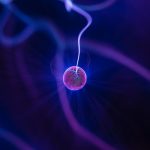
- Nuclear research has led to sustained nutrition in poorer countries, thanks to plant mutation breeding. Specific research in nuclear science has allowed scientists to identify certain genes and mutate plants for ideal results. For example, this has led to crops producing three times as much rice in Bangladesh.
- Nuclear science allows for the production of more effective materials. For example, preventing corrosion on metal and glass, reducing friction, and increasing resistance in numerous products. Nuclear research allows for precise alterations for the strongest and most efficient results.
- Radiation portal monitors are installed along the U.S. border to protect us. These monitors are installed in over 300 points of entry to detect radioactive substances, aka weapons of mass destruction. This is a benefit of nuclear research actively shielding us from potentially extremely harmful situations.
- Radiotherapy offers a potential cure or quality-of-life benefits for 50% of cancer patients. Though we mentioned radiology earlier, it’s worth noting that it wouldn’t exist without nuclear science research.
- Nuclear science has reduced crop loss by controlling the insect population. Radiation has been used to sterilize large groups of insects as an alternative to failed pesticide methods, and has also been noted as environmentally friendly. This has helped preserve crops by reducing infestations.
- Nuclear science has given us essential household safety products. For example, thanks to nuclear function research, we have working smoke detectors within our homes. If it wasn’t for researchers utilizing the natural properties of radioisotopes in product designs, we wouldn’t have smoke detectors to warn us of potential fire danger.
10 Fun Facts About Nuclear Science
Clearly, nuclear science has a huge impact on our world and everyday lives in necessary ways. However, most of these facts won’t mean much to younger kids. Nuclear Science Week is all about garnering the interest of everyone, young and old, so let’s explore a few fun facts!
- Nuclear energy actually splits an atom’s nucleus to produce power!
- Globally, there are over 400 nuclear power reactors.
- Though nuclear energy has great benefits, there is a strong debate regarding the safety of power plants after the Chernobyl disaster.
- Nuclear energy powers 14% of the world’s electricity!
- Currently, 31 countries utilize nuclear reactors.
- The United States and France generate the most nuclear power in the world.
- There is a known downside to nuclear energy: nuclear reactors produce radioactive waste, which must be dealt with safely and can remain radioactive for 1,000-10,000 years.
- Nuclear energy generates 20% of the electricity specifically in the U.S.
- As for the military, there are aircraft carriers and submarines powered by nuclear reactors.
- Only two nuclear function weapons in history have been used in warfare, both by the United States.
Nuclear Science Activities for Kids
One of the best ways to learn about a subject is to do a hands-on project! This is one of the most effective aspects of unit studies, and why we love them! Projects are helpful in science to make these vague concepts come alive and become more relatable to students.
Further, the process of experimenting or working through these projects, as well as seeing the results, helps children remember the lessons on the topic for far longer than merely reading about it. These activities are effective for all learning styles and help encourage kids to have fun with learning about science, especially for kids who may not naturally find fascination in nuclear science.
- Atomic Structure Spelling List with Games
- Nuclear Energy Spelling List with Games
- Make your own electroscope.
- Consider this renewable energy project.
- Make a 3D model of an atom.
- Nuclear Science Teachers Guide
- Try this lemon battery science experiment.
- Explore heat transfer with ice cream.
- DIY magnetic slime!
- Create an illuminated flag with STEM.
- Experiment: Which Materials Conduct Heat Best?
- Make an electromagnet.
- Types of Nuclear Energy
FREE Printables for Nuclear Science Week
Click the images below to view and download our fun printables! Here you’ll find worksheets, a book report, and a few puzzles! Enjoy!
Nuclear science focuses on clean-air energy. Pollution is increasingly becoming a problem in our world, which is exactly what nuclear science is trying to solve. This week is an exploration of how nuclear energy can help our world and provide solutions. Nuclear Science Week gathers everyone together to determine how our actions are affecting this world, and how we can maintain sustainability. This kind of study is perfect for naturally inquisitive and innovative homeschoolers! We hope this unit study helped give your students a solid foundation for the basis of nuclear science, and perhaps even sparked inspiration to study it further! For another idea, learn how to create your own unit study here.
